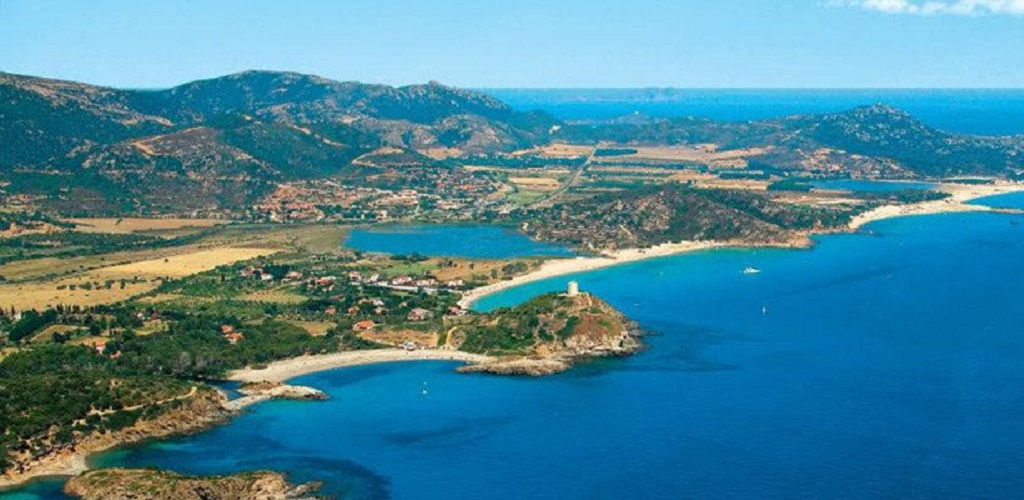Sardinia … a fabulous place to visit. Don’t be surprised if the language you hear around you in this lively seaside city sounds a bit different – almost like Spanish. It is, and you may still find some signs and labels in Spanish, too. A 14th-century Pope gave Sardinia to the King of Aragon, hoping to wrest the island from control of Pisa and Genoa. He gave fiefdoms to about 400 families from Aragon and Catalonia if they would settle the island with a base in Alghero, displacing the local population. Mass in the church of San Francesco is still said in Catalan, and you should visit it to see the graceful 13th-century cloister, reached through the sacristy to the left of the altar. The 14th-century cathedral has a Spanish Gothic doorway. As afternoon fades into evening, climb the walls built by the Spanish to protect against attack by sea, and join locals for an evening promenade along their wide bastions to watch the sunset over the Mediterranean.
Dominated by the homonym tower, visible by all its beaches, Chia owes its popularity to the transparency of its waters, which bathe the coast of Chia for about6 Km. In Chia area you can also visit the archaeological site of Nora, of punic origins, considered the most ancient village of Sardinia. Chia area reaches Capo Spartivento, the second most southern point of Sardinia, where is located the spectacular Faro di Capo Spartivento, a lighthouse – still working – turned into luxury Guesthouse. Read more about Luxury Travel in Sardinia
Basilica di Saccargia, This striking, black and white striped, 12th-century basilica is the most important example of Romanesque style architecture on the island. Located in the countryside near Sassari, inside are beautifully preserved frescoes you can admire. If you are looking for adventure, take a roughly two hour hike through the ancient Nuragic settlement of Tiscali along the river to reach an immense 1500 foot high gorge. Pack a picnic and see if you can verify the local legend of seeing stars at the bottom of the gorge.
The long mining history of Sardinia started probably around the 6th millennium BC, which means that mining has played an important role in the island’s history. The small village of Ingurtosu, together with the nearby Montevecchio was one of the most important mining areas of Sardinia until the mid of the last century. To prevent this region to become isolated or abandoned, UNESCO has decided to declare it World Heritage. Lots of old mining facilities have been renovated, restored, turned into a hotel (Le Dune), or are open to visit, making this region very attractive for travelers and culture-lovers trying to avoid mass-tourism.
